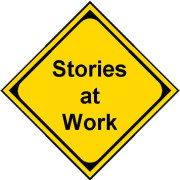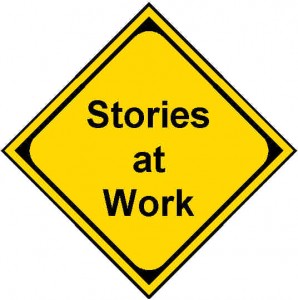Telling tales: how to develop a storytelling culture at work
Barely a day goes by without some communications tsar or journalist evangelising the benefits of storytelling for business and politics. And regular readers of this blog and our clients will also know just how much emphasis we place on the value of stories for making arguments concrete and memorable for the media, politicians, voters, customers or other members of the public.
“The manager of a bottling plant in Alsace told me the other day that …” can lead to an illustration of the importance of new labour regulations, environmental controls, human rights legislation, etc, etc.
“I was travelling in Eastern Spain over the Christmas holidays and came across a …” could introduce a killer example to support an immigrant rights campaign, social welfare legislation, drought/flooding alleviation measures, language-teaching subsidies, etc, etc.
That’s fine, in principle. But how do you develop a storytelling culture in organisations or industries whose staff see this kind of approach as purely something for the communications department to focus on?
Brussels doesn’t do story-telling well. Here are some tips for beleaguered communications staff to wield with recalcitrant colleagues.
1. Remember the big picture
Unless you are seriously odd or read the rightwing British press (or both), EU regulation and legislation are not end-goals in their own right. Whether you’re talking to MEPs, journalists or members of your trade association, the particular directive your colleagues are working on is always part of a bigger story, be it about public health, the environment, or data protection. Encourage colleagues to take a step back and recognise the purpose and impact of their work outside Brussels. I accept this is tricky but it’s important.
2. Sort out the messaging
If you don’t have decent messages, work with the public affairs team and policy experts to refashion them into a proper story, which uses the legislative process to supply the detail (and not the narrative). Less is often more. My heart sinks when I see unambitious and overcomplicated messages that are full of unsubstantiated assertions and meaningless proof points.
3. Know what isn’t a story
Resist the urge to comment on every single micro development that comes out of the Parliament, Commission and Council. There is far too much position paper and press release writing going on in Brussels as it is. I know I am not the only (ex) journalist who would be happy to never read another Brussels missive ‘welcoming’ some Commission announcement or announcing that the European Pencil Sharpener Association (also known as P.O.I.N.T.L.E.S.S.) held a conference. Don’t do it. These things are not interesting and they are not stories. Communications directors must stand their ground on this one.
4. Get your pipeline sorted
You can’t have a storytelling culture without stories and numbers (often known as proof points). If you are in a trade association or NGO coalition you may struggle to get decent material from your members. But they are like gold dust in Brussels (because they are painful to source). Try to set up relationships with colleagues or wider association members who understand what you need and can help feed your pipeline. Tell them what you are looking for and ask them to give you examples and numbers that are memorable, show a relationship or can be put in context (i.e. which tell a story).
5. Apply this approach to everything
Whether it’s company notepads, posters, presentations, social media output or infographics, make sure all your organisation’s communications reflect its values and impact. If you are a grant-making body, this means putting an end to photos of meetings and handshakes and getting more action shots of children being taught in school, or fishermen using new nets.
Here are five ideas for how to encourage a storytelling approach in your organisation.
Let me know what’s worked for you?





Leave a Reply
Want to join the discussion?Feel free to contribute!